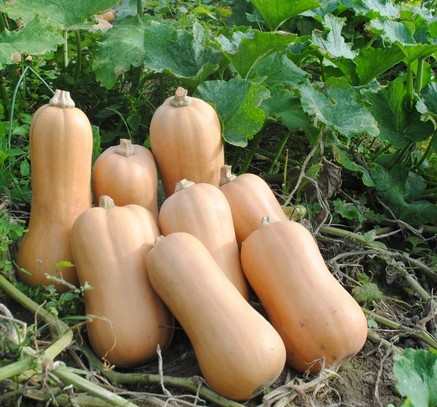South Anna Butternut Squash
Cucurbita moschata ‘South Anna Butternut’
Characteristics
- Type: Vegetable, Heirloom
- Zone: 2 – 11
- Height: 9 – 18 Inches
- Width: 10 – 15 Feet (Vine)
- Sun: Full Sun
- Soil: Well-Drained, pH 5.5 – 7.0
- Disease Resistance: Downy Mildew
- Days to Maturity: 110
Culture
South Anna Butternut Squash is an open-pollinated, butternut squash variety derived from a cross between a Waltham Butternut Squash and Seminole Pumpkin. It has the shape of a traditional butternut squash with the disease-resistance and vigor of the Seminole Pumpkin. This variety exhibits exceptional resistance to downy mildew and performs well in hot and humid climates. Fruits have a slightly darker exterior than traditional butternut squash, but with excellent flavor and storage potential.
Squash may be direct seeded or transplanted, although direct seeding is highly recommended. Winter Squash are a crop that will produce a one-time harvest at the end of the growing season. They should be harvested when plants die back and the fruits obtain their full color. Stem hardness is also an indication of fruit maturity. Once stems harden, fruits are ready for harvest using a set of pruning shears. Winter Squash can be stored in a cool, dry place for several months, depending on variety and sugar content.
Noteworthy Characteristics
South Anna is a downy mildew resistant butternut type that is bred specifically for the South. This variety will avoid the crop failure that can occur in years when Downy Mildew comes early, and provide higher, better-quality yields in years with average Downy Mildew pressure. South Anna can be planted late, allowing for later harvests that will keep better into the winter and spring.
Problems
Click here for more information about disease issues and pests.
Uses
South Anna has sweet, nutritious flesh in a vibrant, bright orange color with a darker tan skin than most other butternuts. Excellent flavor and storage potential. Roast, boil, mash, make soup.
